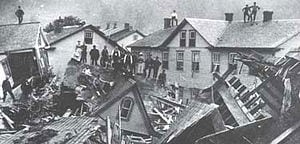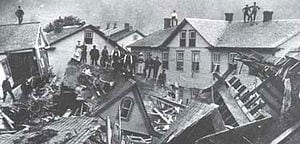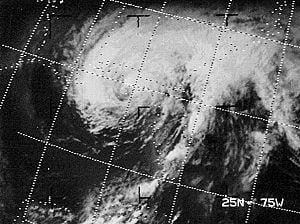“Remember; when disaster strikes, the time to prepare has passed”
– Steven Cyros
Change to any system often comes as the result of failure. That is true with the disaster response protocols in the United States, as well. Historical records from 1635 tell of a great hurricane that swept villagers and Natives away in Southern New England. Governor William Bradford called it “a mighty storm of wind and rain.†At the turn of the 20th century, almost a third of the residents of Galveston would succumb to another mighty storm. From floods to earthquakes to fire, adversity has proven the need for effective management and disaster response solutions.

Disaster brings death and destruction that most people cannot comprehend. The duty of professionals in emergency management is to provide organization and communication at a time when little else remains intact. History shows that a disciplined and practical response can bring a city back from the brink in times of tragedy. It also proves that failure to prepare can lead to catastrophe.
Prior to the development of the first Flood Control Act in 1917, local governments did their best to cope with emergencies on a case-by-case basis. If national response was necessary, often the job fell to the military because it was an organized workforce. The policies set in 1917 regarding emergency management and disaster response were informal and rarely enforced.
The Cold War sparked the development of more stringent disaster response solutions. The Federal Disaster Relief Act assigned the job to civil defense, the first true emergency management system. It was a slow start to change and genuine progress was still decades away. It  would come only at the knees of more misfortune. The turning point in the history of disaster response solutions came due to two major events in the 1970s, one natural and one man made.
In 1972, Hurricane Agnes swept through seven states on the east coast leaving in her wake 122 bodies, hundreds of homeless families and millions of dollars in damage. Relief efforts were chaotic with poorly managed disaster response solutions at both the federal and municipal levels. The lack of coordination between local, state, federal and private organizations led to sluggish progress and confusion. As a result, a bipartisan organization of state governors reviewed the response system and recommended that disaster response solutions and preparedness duties consolidate into one federal agency.
Hurricane Agnes of June 19th, 1972 as it approaches Florida (Photo credit: Wikipedia) Later that same decade, the United States would find they were once again flailing and lacking in disaster response solutions. In 1979, the Three Mile Island meltdown would prove that proper management was still not in place. The same system that had failed to handle Hurricane Agnes had been just as unresponsive in the aftermath of this nuclear event.
It is safe to say that disaster response solutions have come a long way since that hurricane wiped out the colonists and Native Americans in New England. The growth has been measured, but hard-fought and determined. Companies like Penn Care are part of that success.
This country is facing a new age of disaster planning that includes dealing with the possibility of terrorist attacks and biological weapons. If September 11 taught us anything, it is the importance of preparedness. With new threats comes the need for advanced training and disaster response solutions. Â Â
Leaders in emergency management, both at the local and national levels, can to look to experts like Penn Care for advice. The job of a safety consultant is to plug the holes in current protocols and advise on ways to improve the overall system. Practical disaster response solutions, proper equipment and refined education will ensure every team is ready should the unthinkable happen.Â
Source(s): UPenn College of Undergraduate Research Electronic Journal





